

The Genesee River
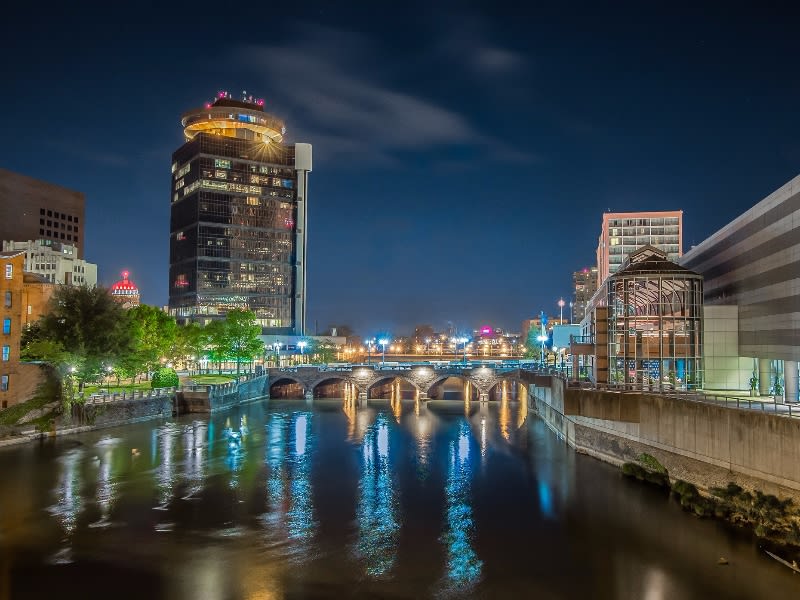
City Of Rochester
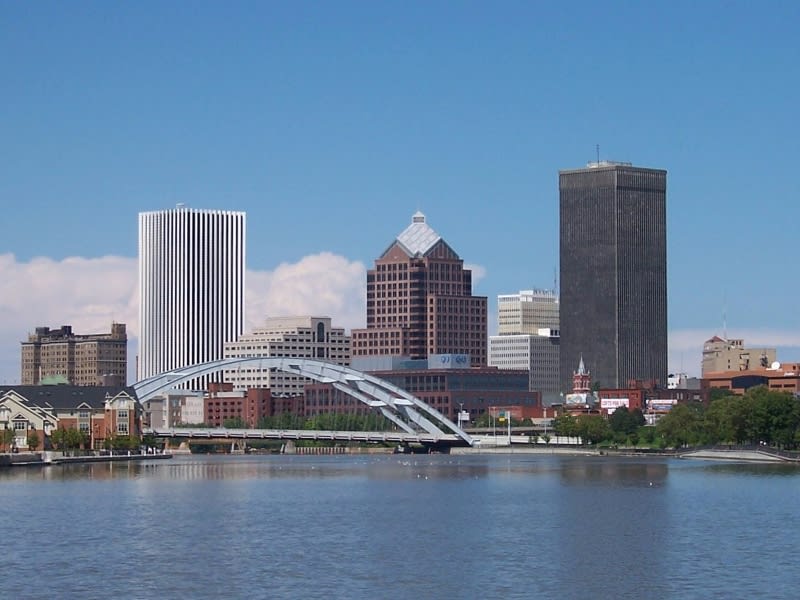
Over its 200 year history, Rochester has learned two great lessons of success; innovation and adaptability. The city has had the chance to test these lessons many times over the years.
When the first white settler built a sawmill on the Genesee Falls in 1789, he discovered the first reason to build a community here. The Genesee Falls provided ample power to run sawmills, flour mills, trip hammer mills, and any other kind of industrial activity needing a means to run machinery.
In the early and middle 1800’s Rochester became the greatest flour producer in the world. Wheat grew abundantly in the fertile Genesee Valley. in 1835, there were 21 flour mills with 96 run of stones in Rochester. These mills were largely automated. Production phenomenal. The Erie Canal provided inexpensive transportation to markets in the East and in Europe. Therefore, Rochester became America’s first boomtown.
But of course times change. Settlement moved westward and wheat production with. Electric power replaced water power. And railroads moved flour as inexpensively as canal boats.
The Erie Canal, Pittsford, NY
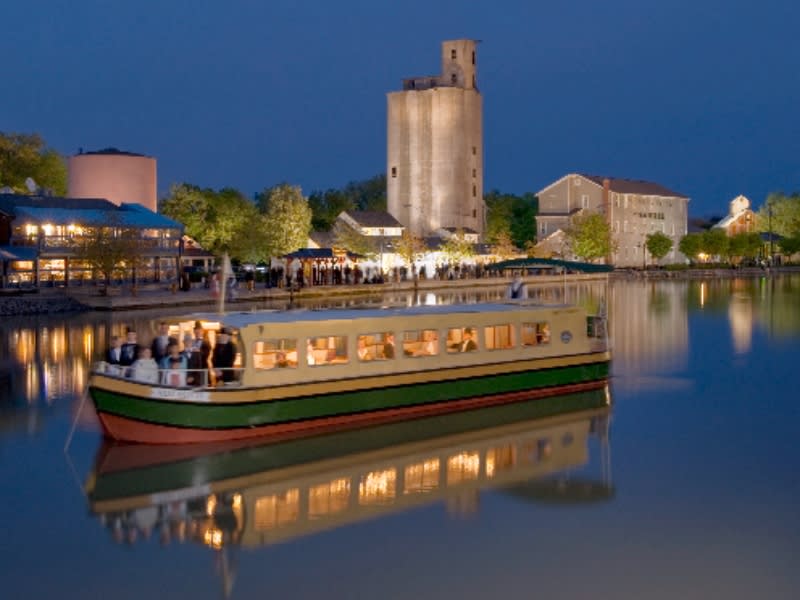
The Genesee River, High Falls
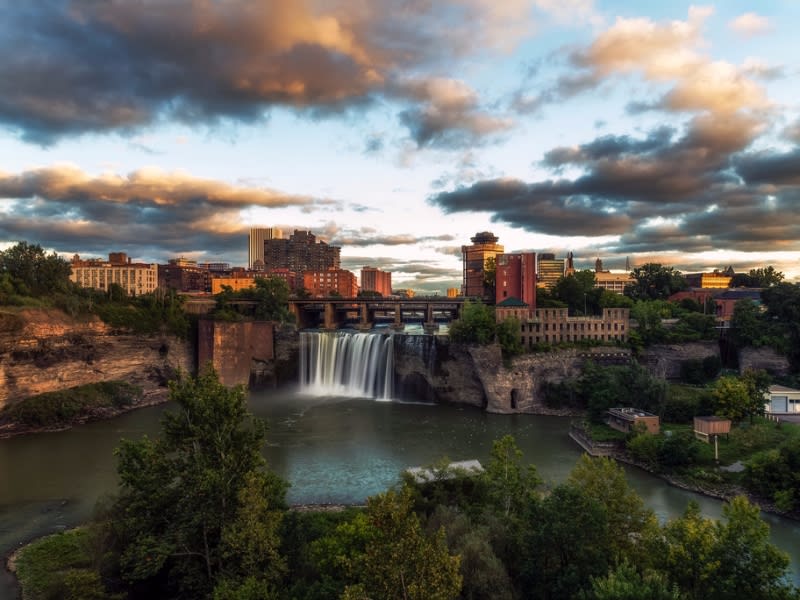
Rochester started to practice the principles of innovation and adaptability. In the 1840’s the nursing industry began to flourish in Rochester. Rich glacial soil and the climate-mollifying influence of Lake Ontario made plant cultivation ideal. James Vick had an extensive operation where the mansions of East Avenue now stand. The Browncroft area also was important nursery land. But it was the partnership of George Ellwanger and Patrick Barry that created Rochester’s revised appellation: The Flower City.
Their 650-acre nursery in the Mount Hope Avenue area became the world's largest. The nursery once filled an order form the Japanese government for 2,000 trees in 200 different varieties and the order was packed and shipped with hardly a dent in their vast nursery stock.
The pattern had been established. Innovation and adaptability. Rochester proceeded to excel in other industrial areas as well. The city became a clothing-manufacturing center. Stein-Block and Micheals-Stern are just tow of several important names that once dominated the industry from Rochester.
The American machine-tool industry received its forward thrust in Rochester in flour-milling days when the tools to construct flour barrels were designed and produced on Brown’s Race. The city remains today a national center for the machine tool industry.
Rochester has a history of invention. The gasoline automobile was invented here. As well as, the machine gun, the voting machine, the lawn mower, and the fishing reel. Western Union started here and Bausch & Lomb, Eastman Kodak and Xerox.
Generation of inventive industry in Rochester gradually produced a more and more highly skilled work force to match the produce innovations. From the early flour-milling days, Rochester has been a big exporter of its products. Rochester flour was exhibited at the Crystal Palace Exhibition in 1851, and Queen Victoria expressed a preference for our flour. Today, Rochester is one of the top ten exporting cities in the U.S. Our city alone accounts for over 40 percent of New York State’s total exports.
High-technology industry and highly skilled work force justify Rochester’s title of The World’s Image Centre. Rochester has a larger percentage of highly skilled people in it work force than almost any other metropolitan area in the country.
Helping to provide these skilled workers are nine colleges and universities located here. The largest local university, Rochester Institute of Technology, offers the only doctoral program in imaging science in the nation, as well as the only bachelor of science degree in microelectronic engineering. At the the University of Rochester, which is one of the leading private research universities in the northeast, the Laboratory for Laser Energetics has single and multi-beam glass laser systems that rank among the most powerful in the world. Also, the Center for Advanced Optical Technology in New York State was established recently a the University of Rochester.
George Eastman Museum
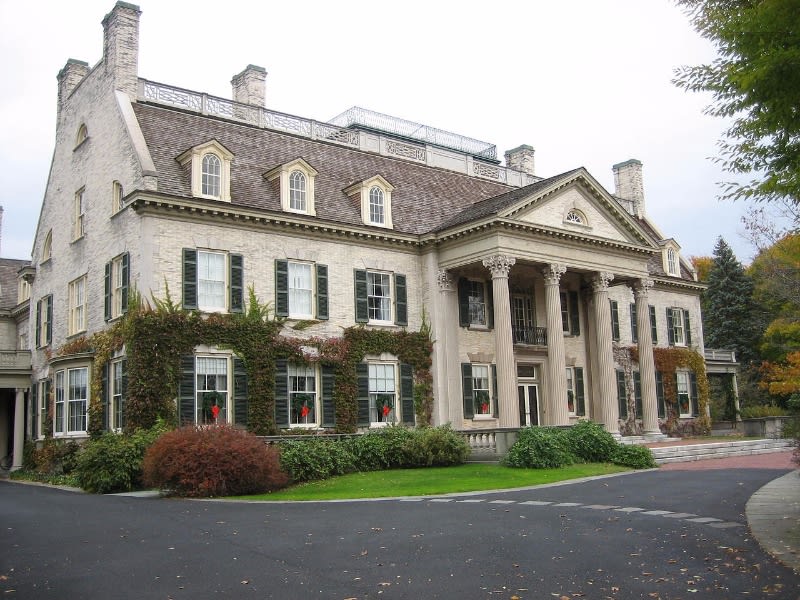
Golisano Theathre

Innovation and adaptability persevere in Rochester. Our residents are granted patents three times more often per capita than the rest of the U.S. Rochester generates new high technology business start ups occur at the rate of one or two a month. Many of these new ventures in optics and imaging. Private funding sources, combined with public and academic programs, fuel many of the new ventures. A non-profit organization, High technology of Rochester, Inc., has been created by industry, government, and academia to foster the areas high tech industry. The organization conducts forums and seminars on starting new businesses.
Rochester’s high tech future continues to be molded today, and the city is prepared with many business inducements including a number of attractive dedicated development sites.
Public Resources information is available for both start up and expanding companies. You can reach out to the Great Rochester Metro Chamber of Commerce at (585) 454-6965 or the Monroe County Economic Development Department at (585) 428-5469.
Rochester is aptly called The World’s Image. Over 90 optic and imaging firms, as well as imaging-related divisions of large firms, are located in the Rochester area. Four world class image and opte orient companies had their start in Rochester: Eastman Kodak, Xerox, Bausch & Lomb and Gannet Newspapers and Wegmans Food Markets.

Eric Whitlock takes great care to get to know his clients, learn their needs and motivations, before carefully crafting a plan and setting expectations that lead his clients to success. Contact today for a buyers or marketing consultation.